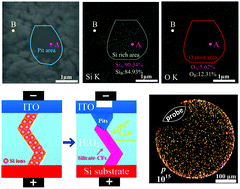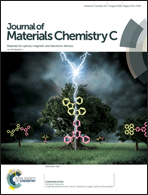Silicate conductive filament assisted broadband light emission of HfO2 high-k solid state incandescent devices†
Abstract
High-k material based solid state incandescent devices (SSI-LEDs) have attracted intense attention as a promising candidate for future broadband light emitting devices. However, the limited understanding of the lighting mechanism hinders the further improvement of the device performance. In this work, the electrical and light emission properties of SSI-LEDs fabricated on substrates with different doping types and concentrations have been studied. It turns out that the substrate can significantly affect the device performances and even determines whether the device can work properly. The slight n-type doping of the HfO2 layer leads to the rectifying behavior of the devices fabricated on p-type and n-type substrates, which further results in differences of the turn-on voltage and the light emission efficiency of different devices. The diffusion of Si ions into the conductive filaments consisting of oxygen vacancies is believed to be responsible for the formation of pits on the HfO2 surface and the polarization requirement of external bias for light emission. This work provides in-depth understanding of the light emission mechanism of the SSI-LEDs, thus being of significant importance to their practical use in future white-light-emitting devices.



 Please wait while we load your content...
Please wait while we load your content...